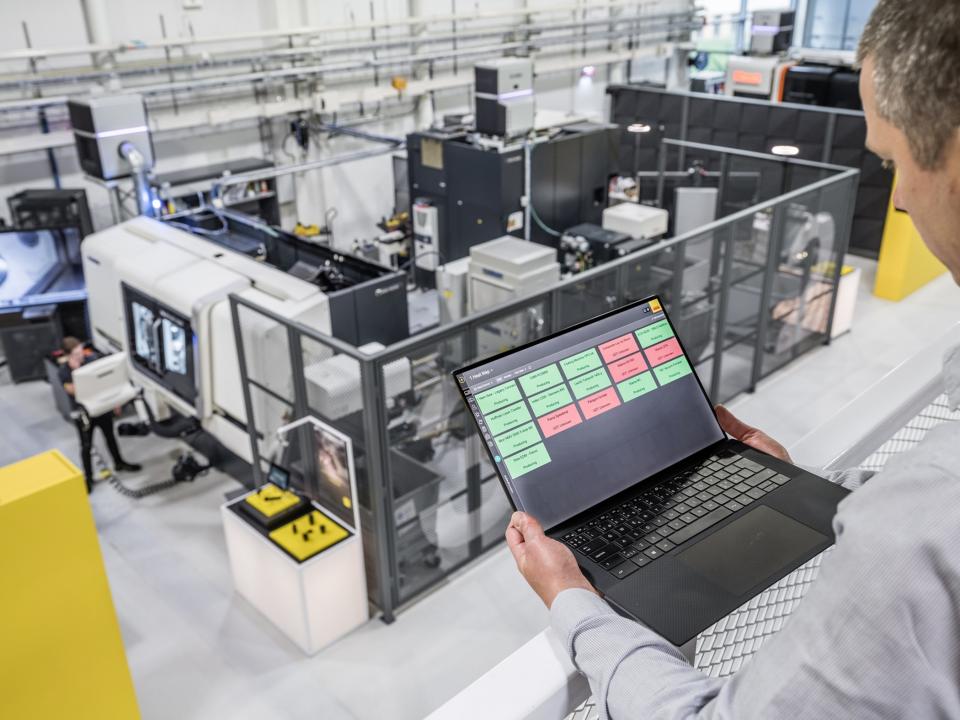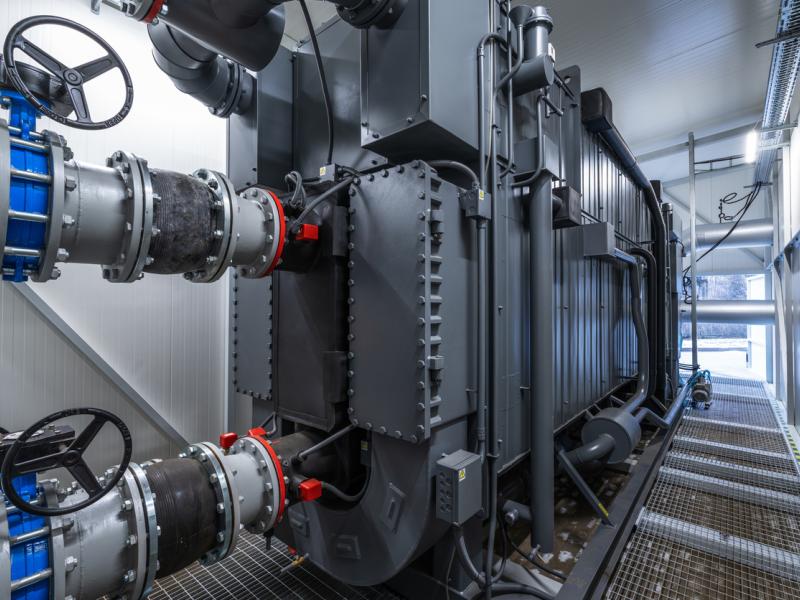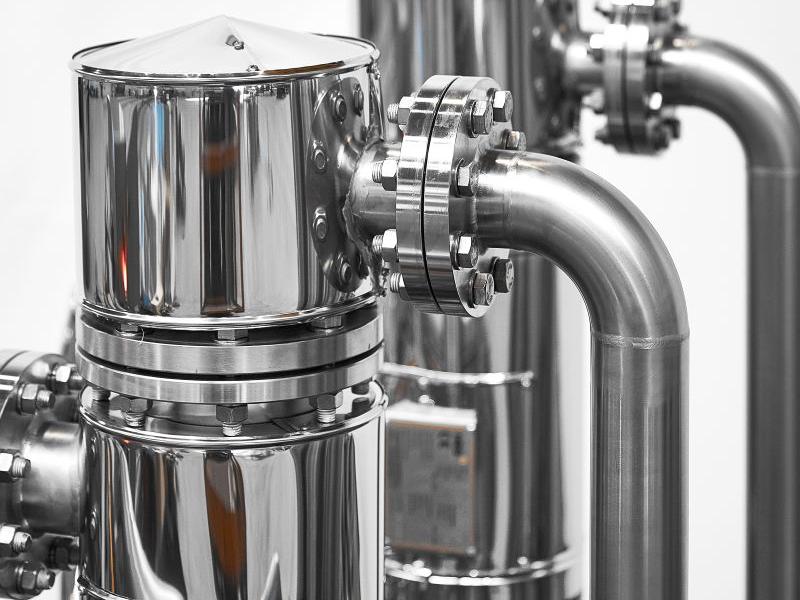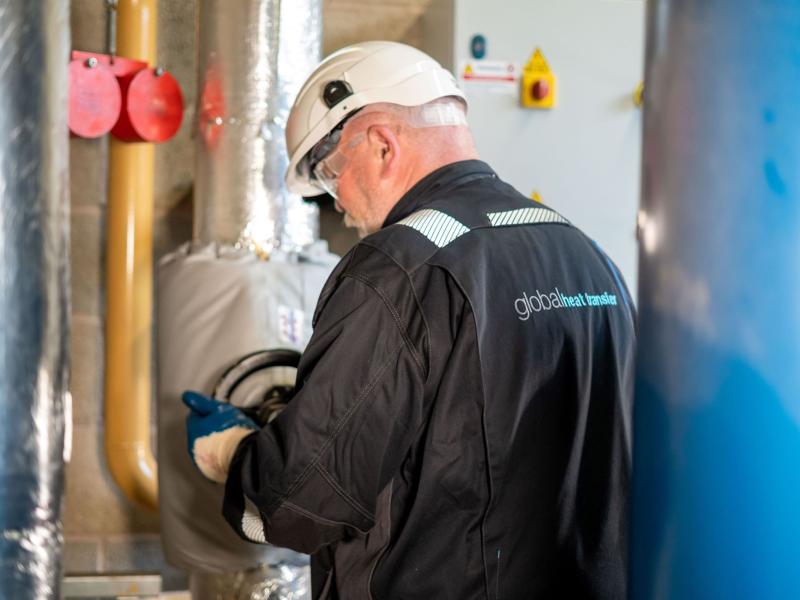The International Energy Agency (IEA) highlights energy efficiency as the "first fuel" in the transition to clean energy, offering one of the fastest and most cost-effective ways to lower carbon emissions. However, as global energy costs continue to rise and sustainability pressures intensify, the manufacturing sector faces a critical challenge: how to remain competitive while reducing its environmental impact. Here, Pontus Westlin, Product Manager at Sandvik Coromant, outlines how machine shops can embrace lean manufacturing, automation and advanced digital technologies to not only reduce costs but also to future-proof their operations in an increasingly demanding market.
The IEA highlights energy efficiency as essential for cutting emissions, reducing energy bills and strengthening energy security. For machine shops, improving energy efficiency is not only a financial necessity but also vital for building a sustainable future.
With economic uncertainty, labour shortages and rising material costs, the manufacturing sector must move beyond traditional methods. Let’s look at five different ways in which adopting a holistic approach, optimising processes and integrating digital tools enables manufacturers to reduce energy consumption — while maintaining productivity and high-quality output.
1.
A holistic approach: integrating technology for greater efficiency
Energy efficiency requires a connected, system-wide approach and optimising one aspect of production, without considering the full process, can create inefficiencies elsewhere. Instead, a holistic view ensures improvements in one area don’t lead to bottlenecks in another. By using digital tools that monitor machine performance and energy use, manufacturers can make data-driven decisions to reduce waste and improve equipment effectiveness.
Collecting and analysing real-time data allows machine shops to quickly identify where energy is being wasted and take immediate corrective action. This approach helps manufacturers improve overall performance and energy efficiency while avoiding unnecessary resource use.
2.
Lean manufacturing: maximising efficiency beyond tools
Energy efficiency isn’t just about investing in high-quality tools — it’s about using them effectively. Lean manufacturing principles, which focus on minimising waste and optimising workflows, are critical for improving efficiency. Techniques such as the 5S methodology (Sort, Set in Order, Shine, Standardise, Sustain) create organised workspaces that improve safety, reduce energy waste and enhance workflow.
Value Stream Mapping (VSM) is another powerful tool that helps visualise the flow of materials and information throughout production. By identifying and eliminating bottlenecks, VSM enhances both productivity and energy efficiency. Regular performance analysis, such as tracking Overall Equipment Effectiveness (OEE), allows manufacturers to identify inefficiencies, while strategies like Single-Minute Exchange of Die (SMED) and Total Productive Maintenance (TPM) help reduce setup times and increase equipment reliability.
3.
Smarter tool management: digital integration for enhanced precision
Effective tool management is key to improving energy efficiency. By integrating digital tools with CAD/CAM software, manufacturers can select the most suitable tools for each job, reducing errors and minimising energy consumption. Regular tool maintenance, guided by digital monitoring systems, ensures optimal tool performance, preventing the inefficiencies that arise from poorly maintained equipment.
One example of digital integration is Sandvik Coromant’s CoroPlus Tool Library, which works with Mastercam CAD/CAM software. This system provides users with a comprehensive tool library that offers recommendations based on material, operation and machine type. Users can import tool assembly data and optimise machining processes with 3D models and recommended cutting data. By reducing manual data entry and errors, this solution helps machine shops operate more efficiently.
A pump gear manufacturer in the oil industry used this solution to reduce a component’s production time from 129 minutes to 75, decreased tool use from six to four and significantly improved tool life. These improvements not only enhanced machining results but also increased operational efficiency, reducing energy consumption.
4.
Automation: boosting productivity and energy savings
Automation is a powerful tool for enhancing both productivity and energy efficiency. By automating repetitive tasks, machine shops can free skilled workers to focus on more complex operations. Automation helps reduce errors, minimise waste and optimise workflows, all of which are key to improving energy efficiency. This aligns with the IEA’s view that digitalisation can improve the energy intensity of manufacturing.
Additionally, automation helps mitigate labour shortages and rising labour costs by reducing reliance on manual work for routine tasks. Automated systems can handle high-volume, repetitive processes more consistently, reducing energy consumption and ensuring higher precision in production.
5.
Simulation software: cutting waste and enhancing accuracy
Simulation software allows manufacturers to test and optimise production processes virtually, significantly reducing the need for resource-intensive trial and error. This not only saves time and money but also reduces material waste and energy consumption. By refining operations before they are implemented in the real world, manufacturers can ensure that processes are as efficient as possible from the start.
For example, CGTech’s VERICUT simulation software allows manufacturers to simulate CNC operations before actual production, optimising cutting parameters and reducing errors. This helps improve setup times, reduces energy waste and ensures predictable production schedules, boosting both productivity and efficiency.
Energy efficiency as a strategic priority
Energy efficiency is not just a cost-saving measure; it’s a strategic priority for machine shops. Reliable data collection and analysis are crucial for improving efficiency and overall equipment effectiveness. Tools like CoroPlus Machining Insights provide centralised machine data oversight, helping manufacturers capture performance data and make informed decisions to increase productivity.
This focus on data-driven improvements leads to what Sandvik Coromant calls Manufacturing Wellness — optimised processes, reduced waste and increased productivity. Seeking expert advice is another way to fast-track progress. Sandvik Coromant’s technical support team can guide manufacturers through process improvements and cost-reduction strategies to help them achieve energy efficiency.
As the push for Net Zero Emissions by 2050 intensifies, energy efficiency will remain a critical focus for the manufacturing sector. Machine shops that prioritise it today will not only reduce energy consumption and costs but will also be better positioned to thrive in an increasingly challenging market.
For more information visit www.sandvik.coromant.com






